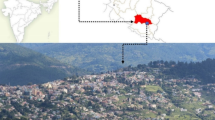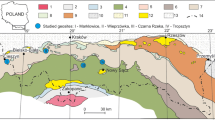Abstract
The Miño is the most important river in the NW Iberian Peninsula. When it flows through Ourense town (Spain), the attractiveness of the thermal springs hides the importance of the fluvial potholes developed over bedrock. These forms reflect the strength of erosion processes, linked to fluvial incision over time. Potholes have an environmental, didactic, socio-economic and cultural potential. In order to promote their integration within territorial heritage, this research is focused on a place-based knowledge and practice. This study aimed to define the meanings and interests of fluvial potholes, regarding their sustainable uses as georesources and offering fit information for the key social actors to assist territorial development. An inventory of sculpted forms was carried out in an urban reach of the Miño River. After the site diagnosis and form characterisation, a set of fluvial potholes (82 cases) was identified within the thermal area. The assessment of the geomorphological and use/management interests delivered their values as resources for territorial sustainability. Ten potholes, selected from a preliminary list and identified through the methodology, have a potential for education, leisure and recreation. Actions designed to raise awareness of the interests and values of these geodiversity components are also presented.








Similar content being viewed by others
References
AEMET Agencia Estatal de Meteorología (2015) Open data. State Meteorological Agency, Spain http://www.aemet.es/es/datos_abiertos/catalogo. Accessed Dec 2015
Bollier D, Helfrich S (2012) Introduction: the commons as a transformative vision. In: Bollier D, Helfrich S (eds) The wealth of the commons: a world beyond market and state. Levellers Press, Amherst, MA, pp. 8–19
Bradbury J (2014) A keyed classification of natural geodiversity for land management and nature conservation purposes. Proc Geol Assoc 125:329–349. doi:10.1016/j.pgeola.2014.03.006
Brierley G, Fryirs K, Cullum C, Tadaki M, Huang HQ, Blue B (2013) Reading the landscape: integrating the theory and practice of geomorphology to develop place-based understanding of river systems. Prog Phys Geogr 37(5):601–621
Brilha J (2015) Inventory and quantitative assessment of geosites and geodiversity sites: a review. Geoheritage 8(2):119–134. doi:10.1007/s12371-014-0139-3
Carcavilla L, Palacio J (2010) Proyecto Geosites: aportación española al patrimonio geológico mundial. Instituto Geológico y Minero de España, Madrid
CHMS Confederación Hidrográfica Miño-Sil (2015) Plan Hidrológico 2015–2021, Parte española de la Demarcación Hidrográfica del Miño-Sil. MAGRAMA, Gobierno de España
Cruz R, Goy JL, Zazo C (2014) Hydrological patrimony in the mountainous áreas of Spain: geodiversity inventory and cataloguing of the Sierras de Béjar and del Barco (in the Sierra de Gredos of the Central System). Environ Earth Sci 71:85–97. doi:10.1007/s12665-013-2697-0
Durán JJ, Vallejo M, Fernández L (1998) Patrimonio hídrico e hidrogeológico de la Comunidad Autónoma de Madrid. Sociedad Geológica de España, Madrid
Fernández-Martínez E, Díaz-Martínez E (2015) El valor del patrimonio geológico: tipos de interés y de uso potencial. In: Hilario A et al (eds) Patrimonio geológico y geoparques, avances de un camino para todos. Cuadernos del Museo Geominero 18, Instituto Geológico y Minero de España, Madrid, pp. 19–24
Haury D (1993) Teaching science through inquiry. ERIC, CSMEE Digest
IGE Instituto Galego de Estatística (2015) Municipality data. Galician Statistics Institute http://www.ige.eu/igebdt/. Accessed Dec 2015
Kale VS, Shingade BS (1987) A morphological study of potholes of Indrayani Knick Point, Maharashtra. In: Datye VS et al (eds) Exploration in tropics, Prof. K.R. Dikshit Felicitation Volume Committee, Pune, pp. 206–214
Lorenc MW, Muñoz P, Saavedra J (1994) The evolution of potholes in granite bedrock, W Spain. Catena 22:265–274
Nemec W, Lorenc MW, Saavedra J (1982) Potholed granite terrace in the río Salor valley, western Spain: a study of bedrock erosion by floods. Tecniterrae 50:6–21
Ortega JA (2010) Morfología de los ríos en roca. Variaciones y tipología. In: Ortega JA, Durán JJ (eds) Patrimonio geológico: los ríos en roca de la Península Ibérica, Publicaciones del Instituto Geológico y Minero de España, Madrid, pp. 55–77
Ortega JA, Gómez-Heras M, Pérez-López R, Wohl EE (2014) Multiscale structural and lithologic controls in the development of stream potholes on granite bedrock rivers. Geomorphology 204(1):588–598. doi:10.1016/j.geomorph.2013.09.005
Panizza M (2001) Geomorphosites: concepts, methods and example of geomorphological survey. Chin Sci Bull 46(suppl Bd):4–6
Panizza M (2009) The geomorphodiversity of the Dolomites (Italy): a key of geoheritage assessment. Geoheritage 1:33–42. doi:10.1007/s12371-009-0003-z
Panizza M, Piacente S (2003) Geomorfologia culturale. Pitagora Editrice, Bologna
Pelletier JD, Sweeney KE, Roering JJ, Finnegan NJ (2015) Control on the geometry of potholes in bedrock channels. Geophys Res Lett 42(3):797–803. doi:10.1002/2014GL062900
Pena dos Reis R, Henriques MH (2009) Approaching an integrated qualification and evaluation system for geological heritage. Geoheritage 1(1):1–10. doi:10.1007/s12371-009-0002-0
Pereira P, Pereira D (2010) Methodological guidelines for geomorphosites assessment. Géomorphologie 2:215–222
Reynard E, Coratza P, Regolini-Bissig G (eds) (2009) Geomorphosites, Pfeil, München
Reynard E, Perret A, Bussard J, Grangier L, Martin S (2016) Integrated approach for the inventory and management of geomorphological heritage at the regional scale. Geoheritage 8(1):43–60. doi:10.1007/s12371-015-0153-0
Richardson K, Carling P (2005) A typology of sculpted forms in open bedrock channels. Geol Soc Am Special Paper 392
Semken S, Freeman CB (2008) Sense of place in the practice and assessment of place-based science teaching. Sci Edu 92(6):1042–1057
Sobel D (2003) Place-based education: connecting classrooms and communities. Orion Society, Great Barrington
Springer GS, Tooth S, Wohl EE (2005) Dynamics of pothole growth as defined by field data and geometrical description. J Geophys Res 110(F04010). doi:10.1029/2005JF000321
Springer GS, Tooth S, Wohl EE (2006) Theoretical modelling of stream potholes based upon empirical observations from the Orange River, Republic of South Africa. Geomorphology 82:160–176
Tinkler KJ, Wohl EE (eds) (1998) Rivers over rock: fluvial processes in bedrock channels. American Geophysical Union, Geophysical Monograph Series 107
Vidal-Romaní JR, Vaqueiro M, Sanjurjo J (2014) Granite landforms in Galicia. In: Gutiérrez F, Gutiérrez M (eds) Landscapes and landforms of Spain. Springer, Dordecht, pp. 63–70
Villalobos M (2001) Estrategias en la protección del patrimonio geológico andaluz. Medio Ambiente 37:36–39
Villalobos M, Braga A, Guirado J, Pérez-Muñoz AB (2004) El inventario andaluz de georrecursos culturales: criterios de valoración. De Re Metallica 3:9–21
Viveen W, Van Balen RT, Schoorl JM, Veldkamp A, Temme AJ, Vidal-Romaní JR (2012) Assessment of recent tectonic activity on the NW Iberian Atlantic Margin by means of geomorphic indices and field studies of the lower Miño River terrace. Tectonophysics 544-545:13–30. doi:10.1016/j.tecto.2012.03.029
Viveen W, Schoorl JM, Veldkamp A, Van Balen RT (2014) Modelling the impact of regional uplift and local tectonics on fluvial terrace preservation. Geomorphology 210:119–135. doi:10.1016/j.geomorph.2013.12.026
Weisz H, Clark E (2011) Society-nature coevolution: interdisciplinary concept for sustainability. Geogr Ann B 93:281–287
Acknowledgements
This research was partially supported by the project ‘State of Geomorphological Heritage within the Thermal Surroundings of Ourense’, reference INOU15-02 G501 131H 64702, funded by the Vicerrectorado del Campus de Ourense (Water Campus, University of Vigo) and the Diputación de Ourense. MA Álvarez-Vázquez thank the Plan I2C (2011-2015) of the Xunta de Galicia in collaboration with the International Campus do Mar (ED481A-2015/410) for a grant.
Author information
Authors and Affiliations
Corresponding author
Rights and permissions
About this article
Cite this article
Álvarez-Vázquez, M.Á., De Uña-Álvarez, E. Inventory and Assessment of Fluvial Potholes to Promote Geoheritage Sustainability (Miño River, NW Spain). Geoheritage 9, 549–560 (2017). https://doi.org/10.1007/s12371-016-0213-0
Received:
Accepted:
Published:
Issue Date:
DOI: https://doi.org/10.1007/s12371-016-0213-0




